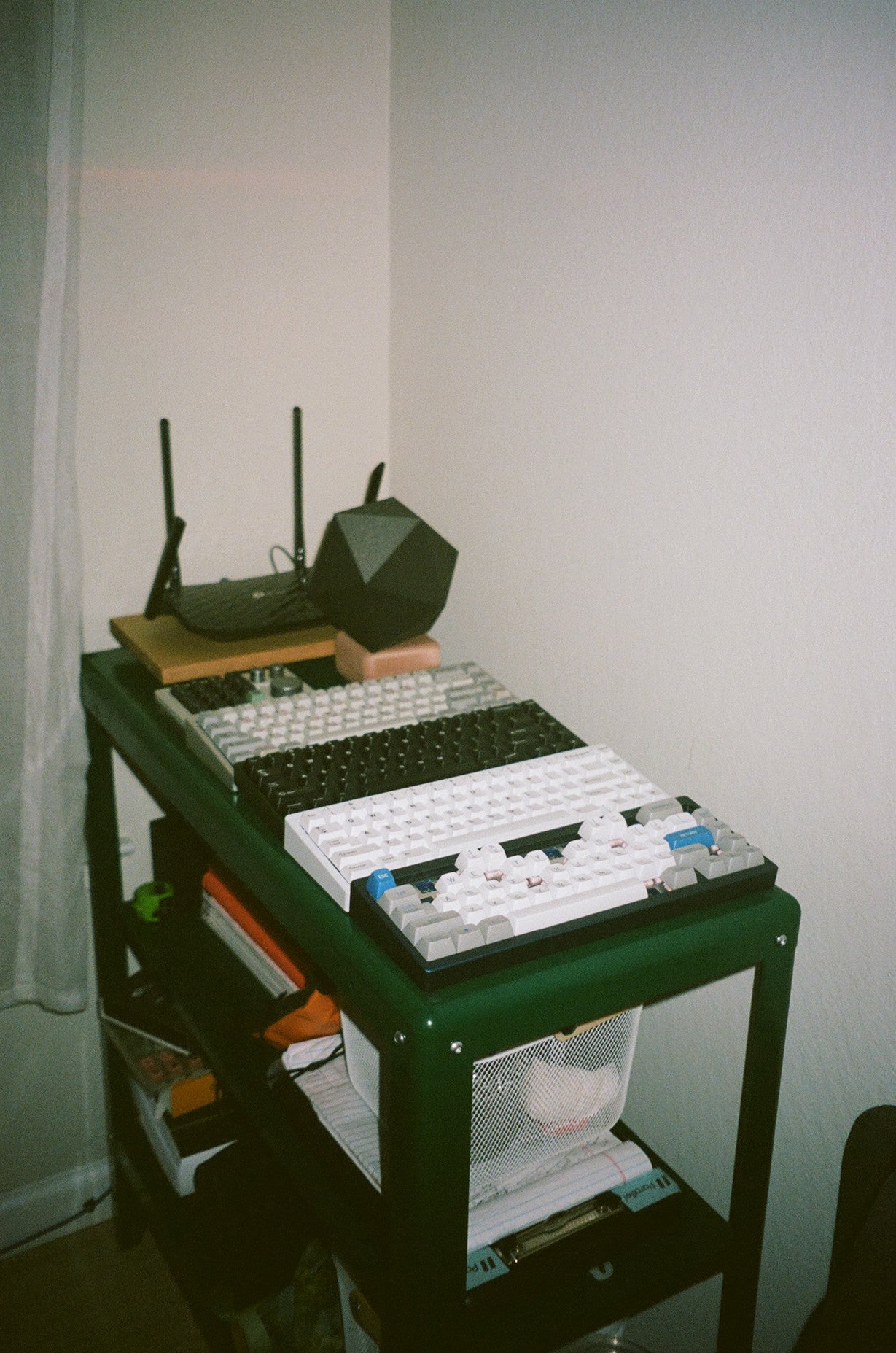Frequently Asked Questions (FAQ)

What are the essential parts of a mechanical keyboard?
Keyboards vary in terms of components, but generally, our keyboards will require the following components:
1. Keyboard Case (ie. Sequence or Portal).
(Please note, all case purchases include a 35A O-ring, FR4 switch plate, feet, DB+JST set, and Hi-Chew)
2. Printed Circuit Board (PCB) (ie. Hotswap or Solderable)
3. O-Ring (mounting system)
4. Daughterboard + JST Cable (DB+JST)
5. Switch Plate
6. Keyboard Switches
7. Keycaps
8. Keyboard Stabilizers
You can get everything you need for a full build with one of our Keyboard Kits and Component Kit!
When does Parallel restock its products?
We offer seasonal product launches or "drops" a few times a year. Typically once a keyboard model has sold through, there are no set plans to run it again. We want to create as many refined and unique designs as we can.
However, there will occasionally will be extra units or "B-stock" units which have slight imperfections that we list at a discount throughout the year, typically after a given model has sold through.
Where to find the latest news?
We post updates and news through the following channels:
Instagram
Discord
Newsletter/Info
Do Parallel keyboards support your OS?
Parallel PCBs come preloaded with an OS-agnostic BIOS, meaning, regardless if you have a Mac, Windows, Linux, or Chrome operating system, your keyboard should be plug and play after it's all put together!
What's the difference between Hot-Swap and Solderable PCBs?
Hot-swap is a modular configuration of a PCB that allows you to replace your keyboard switches without the use of a soldering tool.
Solderable is a PCB configuration that requires a soldering tool in order to affix your keyboard switches to the PCB. Soldering your keyboard offers benefits related to response time and switch-feel consistency, but comes with drawbacks if you want to change your keyboard switches or plate.
Why is QMK Toolbox returning "dfu-programmer: no device present" when you try to flash your PCB/Keyboard?
It may be the case that you assembled your keyboard, held ESC to put your keyboard into DFU mode, and, instead of recognizing your keyboard, saw the text shown in the picture below in the QMK console:
Link to Github Issue
In order to solve this issue, you will need to:
1) Navigate to the Tools tab in the menu bar of QMK toolbox2) Click on Install Drivers... (shown below), this will reinstall the drivers
3) Now, you should be able to flash your keyboard normally
What's the difference between our Switch Plate materials?
We offer different switch plates as each material offers a variation between aesthetics, typing-feel, and sound.
With regards to feel, polycarbonate is the softest plate we offer, so it offers the most flex when typing. FR4 is moderately flexy, whereas aluminum and carbon fiber are stiffer in comparison, but still offer a modest amount of flex when typing.
What's the difference between Hot-Swap and Solderable PCBs?
Hot-swap is a modular configuration of a PCB that allows you to replace your keyboard switches without the use of a soldering tool.
Solderable is a PCB configuration that requires a soldering tool in order to affix your keyboard switches to the PCB. Soldering your keyboard offers benefits related to response time and switch-feel consistency, but comes with drawbacks if you want to change your keyboard switches or plate.
What's the difference between our O-Rings?
Our O-Rings vary based on hardness (30A, 35A, and 40A). Hardness is inversely correlated to “bounciness” or “feel” of typing on the keyboard.
What is a Pre-Order and why join?
A pre-order is an option offered for our newer products that allows you to pre-purchase the product before it is live and receive it once it is launched.
Many of our products are made-to-order, and the pre-order model ensures we’re able to produce just the right amount of custom orders needed.
Joining a pre-order will guarantee that you receive the model, color, and configuration that you’d like. This model allows Parallel to offer more options and customization to each product we release.
What is the expected lead time for a Pre-Order?
Generally, there will be a 2-5 month lead time between when the order is placed and when it is shipped to the customer. There will be regular progress updates on each products pre-order page.
